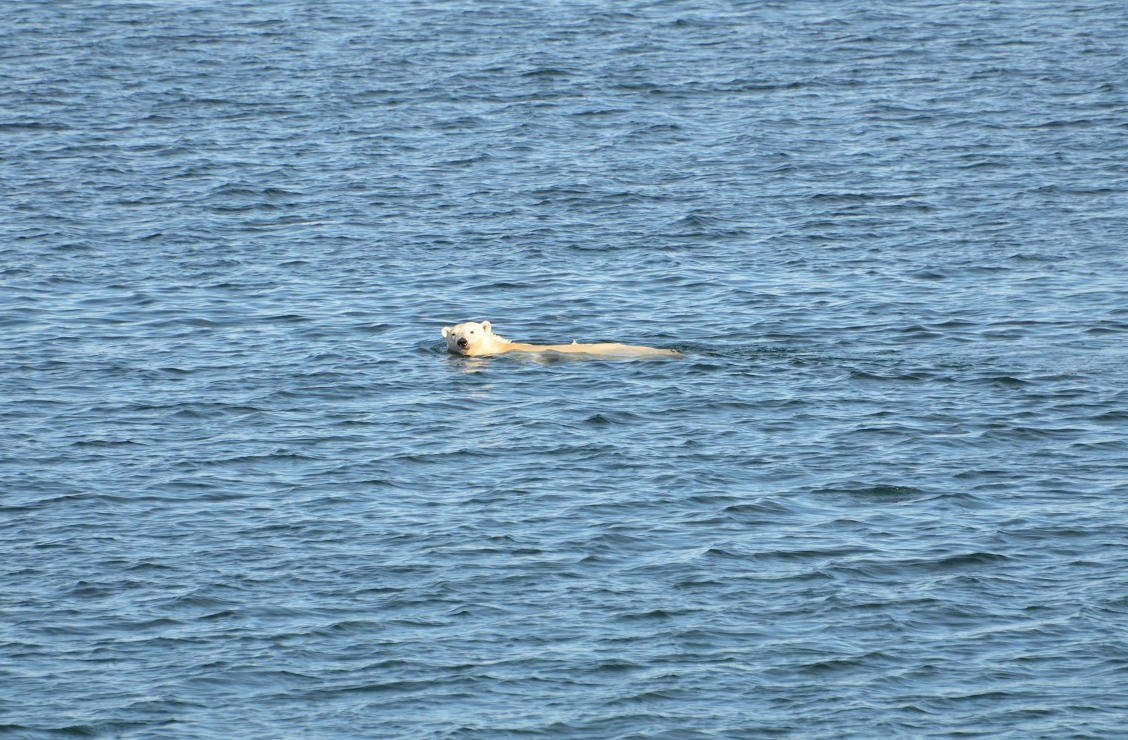What’s the healthiest balance of carbs, fat, and protein? Check out any online diet forum and you’ll hear plenty of passionate opinions. The debate, it turns out, is just as heated for polar bear nutrition.
A few years ago, ecologist Robert Rockwell began publishing studies showing that at least some polar bears living in the western Hudson Bay eat berries, birds, eggs, and other land plants and animals. Pacific Standard featured his work in a cover story in 2012. The behavior he recorded seemed new. Previously, polar bears subsisted almost entirely on sea mammals, such as seals, out on sea ice. So Rockwell posed a question: Could eating land-based foods help these polar bears deal with climate change?
In the Hudson Bay, global warming is melting the sea ice weeks sooner into the summer than it used to. Without the ice, Hudson Bay bears can’t hunt plump, blubbery seals in the open ocean. Scientists worry they now have less time to build up the fat reserves they need at the start of the summer, when they normally climb on land to await the return of the ice in November. Berries, or even caribou, are not nearly as calorie-dense as seals. Consequently, measurements of bears taken in the late 1990s and mid-2000s showed they were in poorer condition.
Without the ice, Hudson Bay bears can’t hunt plump, blubbery seals in the open ocean.
But perhaps bears are circumventing part of this problem by eating more land-based foods when they come ashore in the summer. A few science teams have tried to study whether that’s possible. Today, however, a separate team of scientists published a review saying the available science points to polar bears not being able to survive a longer summer healthfully, even if they are eating so-called “terrestrial foods.”
“The overarching point we make about the population in western Hudson Bay—which is the best-studied population in the world and [is] the place where the most terrestrial feeding has been observed—that population is still showing lower survival rates when they’re onshore for a longer period of time,” says Karyn Rode, a United States Geological Survey wildlife scientist who led the review. Terrestrial foods can’t make up for lost sealing time because they’re “low quality and low abundance,” she says. Polar bears need more food, and more fat.

Meanwhile, Rockwell counters that Rode and others have unfairly dismissed his work. “We’ve never said it’s going to save all the bears,” he says. “We very carefully said the eggs and the geese would help some of the bears.” There’s still some question about to what extent land-based foods can make up for Hudson Bay polar bears’ lost sealing opportunities. Rockwell isn’t convinced the answer is likely “little, or not at all.”
But there are many points of contention with Rockwell’s work.
There’s debate about the studies Rockwell performs, in which he dissects polar bear scat, looking for goose feathers and berry seeds. The studies can’t quantify how many bears are eating geese and berries because it’s impossible to tell when the same bear makes several piles of scat. Rode says that could mean few bears are eating terrestrial foods, while Rockwell says the large area over which he has gathered scat suggests it represents many bears.
Rockwell doesn’t think it’s necessarily true that because polar bears are evolved to eat a lot of fat, they don’t digest carbohydrates and protein as well. (Do polar bears need a paleo diet?)
Foraging and hunting expends lots of energy, so many polar bears might find it doesn’t work out for them, calorically, to nab land-based foods, Rode says. Previously, she and her colleagues argued against a study that calculated polar bears could meet their caloric needs on land. Rode’s comment pointed out the study used numbers from resting bears, rather than active ones. But a polar bear foraging on land may not have to expend all that much energy, Rockwell says. “It’s pretty easy. You just sort of walk along and you eat eggs.”
New in Rode’s review is genetic evidence that polar bears evolved to eat super-fatty diets. They could suffer from having to eat the more carbohydrate- and protein-laden foods available on land. Rockwell, for his part, doesn’t think it’s necessarily true that because polar bears are evolved to eat a lot of fat, they don’t digest carbohydrates and protein as well. (Do polar bears need a paleo diet?)
Both agree there are more studies scientists need to do before they’ll be able to settle this question. If it is settled, what’s the upshot? Knowing how well polar bears are able to survive melting ice helps scientists predict how numerous and healthy they will be in the future, and to prepare for a future that will be incredibly different for the bears, whether or not they’re able to cope. Right now, the Hudson Bay is ice-free for about four months out of a year. Assuming the world reduces its rate of greenhouse gas emissions now and steeply cuts emissions after 2040—basically, a sensible scenario that’s neither overly optimistic nor pessimistic—the Hudson Bay will have no ice on it for seven months out of the year by the end of the century. That’s three more months during which polar bears will have to make their living on land, somehow.
Since We Last Spoke examines the latest policy and research updates to past Pacific Standard news coverage.




